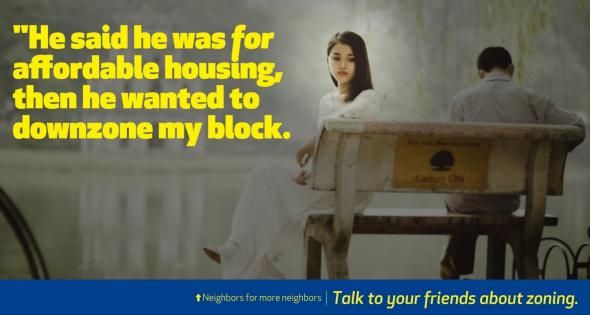Physical Address
304 North Cardinal St.
Dorchester Center, MA 02124
Physical Address
304 North Cardinal St.
Dorchester Center, MA 02124

Nolan Gray plunges into the Sam Raimi "Spider-Man" trilogy to uncover the housing problems (and solutions) of expensive cities like New York.

Five years ago everything in California felt like a giant (land use policy) dumpster fire. Fast forward to today we live in a completely different world. Yimby activists have pushed policy, swayed elections, and dramatically shifted the overton window on California housing policy. And through this process of pushing change, Yimbyism itself has evolved as well. Learning by Listening Yimbys started out with a straightforward diagnosis of the housing crisis in California. They said, “…housing prices are high because there’s not enough housing and if we want lower prices, we need more housing”. And they were, of course, completely right…at least with regards to the specific problem-space defined by supply, demand, and the long run. As Yimby’s started coalition building, though, they began recognizing related, but fundamentally different concerns. For anti-displacement activists, the problem was not defined by long-run aggregate prices. It was instead all about the immediate plight of economically vulnerable communities. Increasing supply was not an attractive proposal because of the long time horizons (years, decades) and ambiguous benefit for their specific constituencies. Yimbyism as Practical Politics Leaders in the Yimby movement could have thrown up their hands and walked away. But they didn’t. Instead they listened and developed a yes and approach. The Yimby platform still embraces the idea that, long run, we need to build more housing, but it now also supports measures to protect those who’ll fall off the housing ladder tomorrow without a helping hand today. Scott Weiner’s SB50 is a great example of this attitude in action. If passed, the bill will reduce restrictions on housing construction across the state. It targets transit and job rich areas and builds in eviction protections to guard against displacement. At a high level, it sets up the playing field so that renters in a four story […]

Believe it or not, the YIMBY movement won a lot in 2018. It kicked off with January’s high of California State Senator Scott Wiener’s introduction of SB 827, which would have permitted multifamily development near transit across the state, but fell to a low after its eventual defeat in committee, invariably followed by a flurry of think pieces about how the pro-development movement had “failed.” At the time, I made the case for optimism over on Citylab, but that didn’t stop the summer lull from becoming a period of soul searching within the movement. And then, a strange thing happened: YIMBYs started winning, and winning big. In August, presidential-hopeful Senator Cory Booker released a plan to preempt exclusionary zoning using Community Development Block Grant funds, quickly followed by a similar plan from Senator Elizabeth Warren in September. Also in August, Housing and Urban Development Secretary Ben Carson unexpectedly outed himself as a YIMBY. Then, in December, things really got crazy: two major North American cities, Minneapolis and Edmonton, completely eliminated single-family zoning. States like Oregon soon started talking about doing the same. In the same month, California kicked into overdrive: San Francisco—ground zero for the YIMBY movement—scrapped minimum parking requirements altogether. State Senator Wiener introduced a newer, sharper version of SB 827. And rolling into 2019, elected officials at every level of California government—from the state’s new Democratic governor to San Diego’s Republican mayor—are singing from the YIMBY hymn sheet. All in all, it wasn’t a bad year for a movement that’s only five years old. But what really made 2018 such an unexpected success for YIMBYs? Focus on Citywide Reform Over Individual Rezonings Showing up and saying “Yes!” to individual projects that are requesting a rezoning, variance, or special permit is bread-and-butter YIMBY activism. And while YIMBYs should still […]

In a recent blog post, Julia Galef has generated a fairly comprehensive list of pro-housing arguments and counterarguments to those arguments. She gives the most detailed consideration to the “infinite demand” argument- in her words, “So even if SF adds a lot of additional housing, prices will still rise almost as quickly as they would have anyway, as long as demand to live here continues to soar. This view is mainly based on examples of other desirable cities, like New York or Singapore, which have built new housing at a faster rate than SF but nevertheless saw steep increases in price.” To which I respond: New York? Really? New York is only pro-housing when compared to San Francisco- which is a bit like saying Iran is a libertarian paradise compared to the Islamic State. In fact, New York has built housing at a glacial pace. Between 1960 and 1976, the number of new housing units completed per year ranged from just over 14,000 to over 60,000, and exceeded 20,000 in all but four years. In the almost forty years since 1976, the number of new units exceeded 20,000 in only four years (2006-10) and was above 14,000 for only ten years (1989, 2002, 2004-10, 2015). Meanwhile, demand for housing has increased: between 2006 and 2014 alone, the citywide renter population grew by 600,000. A better example of a “desirable city” would be a city where both the population and the housing supply is growing at a rapid rate- Raleigh, for example, or Las Vegas. These cities are much cheaper than New York or San Francisco.* Another example of a cheap, permissive city is Tokyo. But the post suggests Tokyo may not have grown as fast as American cities. In fact, Tokyo’s regional population grew by 17 percent since 1990- from 32.5 million […]

The far-left “TruthOut” web page recently published an attack on YIMBYs,* describing them as an “Alt-Right” group (despite the fact that the Obama Administration is pro-YIMBY). I was surprised how little substance there was to the article; most of it was various ad-hominem attacks on YIMBY activists for cavorting with rich people. I only found two statements that even faintly resembled rational arguments. First, the article suggests that only current residents’ interests are worth considering in zoning policy, because “the people who haven’t yet moved in” most often means the tech industrialists, lured by high salaries, stock options and in-office employee benefits like massage therapists and handcrafted kombucha.” This statement is no different than President Trump’s suggestion that Mexican immigrants “[are] bringing drugs. They’re bringing crime. They’re rapists.” – that is, it is an unverifiable (if not bigoted) generalization about large numbers of people. Furthermore, it doesn’t make sense. The “tech industrialists” have the money to outbid everyone else, so they aren’t harmed by restrictive zoning. Second, the article states that academic papers aren’t as relevant as the actual experiences of San Franciscans displaced by high housing costs. In response to the argument that less regulation means cheaper housing, it states “tell that to people like Iris Canada, the 100-year-old Black woman who had used local regulations to stay in her home of six decades, only to be evicted in February.” So in other words, somebody was evicted in San Francisco, therefore San Francisco’s restrictive zoning prevents eviction. I don’t see how the latter follows from the former. The whole point of the YIMBY/market urbanist argument is that if there was more housing, there would be lower housing costs, hence fewer evictions. *For those of you who are unfamiliar with the term, YIMBY means “Yes In My Back Yard”, a […]
Last week, Reason.tv (the multimedia outlet of Reason Magazine) published a video about San Francisco’s YIMBY movement. The video describes the decades of underdevelopment in San Francisco as the result of community activism intended to limit the supply of new construction. As a result, San Francisco’s housing market is severely supply-constrained, and outrageously expensive. The problem has gotten so bad that pro-development, “YIMBY” organizations such as SFBARF and Grow San Francisco have sprung up to counter the anti-development forces. It’s great to see Reason taking notice of the YIMBY movement, and we’d love to see more attention paid to urbanism at libertarian sites. Three of us at Market Urbanism attended the first nationwide YIMBY conference in Boulder that the video mentions, and we’ll be sharing our thoughts on the conference soon. (h/t Jake Thomas at the Market Urbanism facebook group)